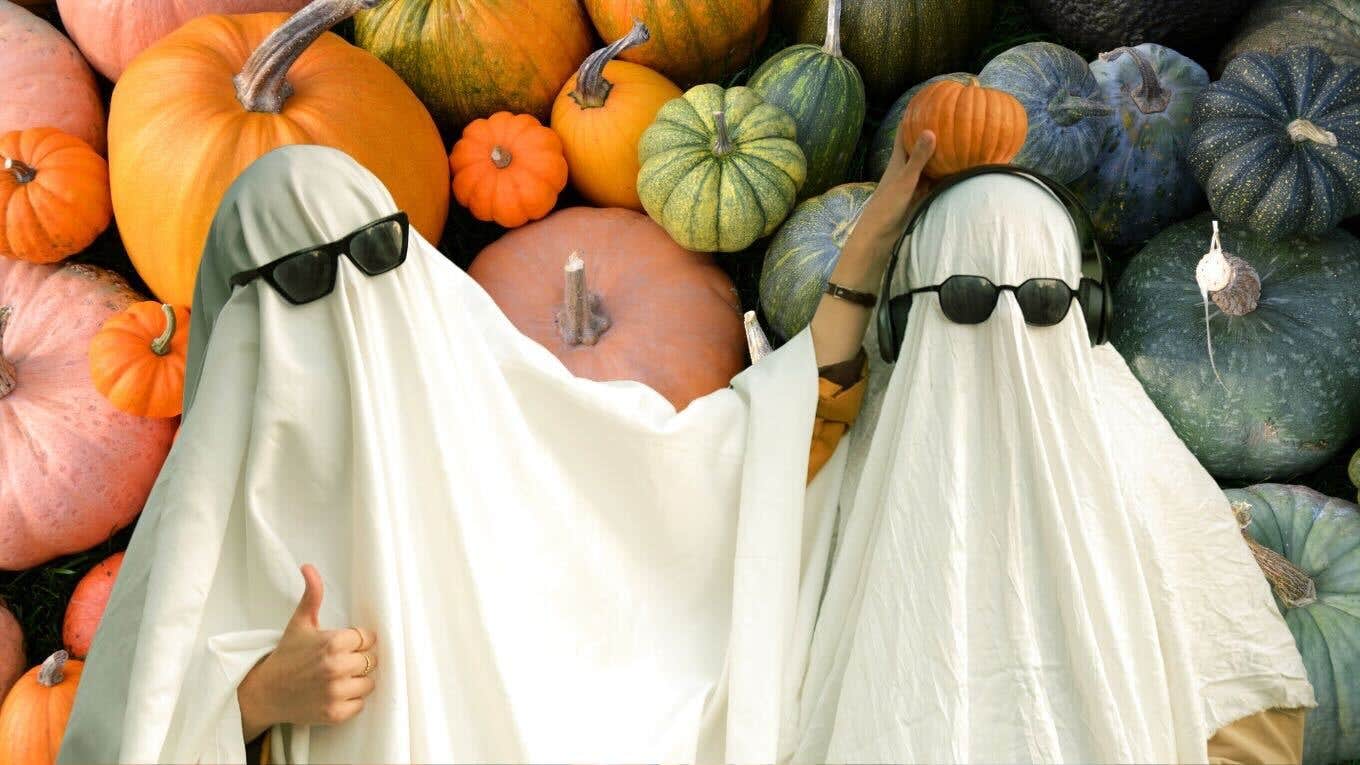What It Means When You See A Purple, Teal Or Blue Pumpkin While Trick-Or-Treating
All treats, no tricks!
 Studio Barcelona | Shutterstock, Seher Doğan | Pexels
Studio Barcelona | Shutterstock, Seher Doğan | Pexels With Halloween approaching, you’re likely to spot a variety of different colored pumpkins or trick-or-treat buckets. But do you know what each colored pumpkin means? We'll unveil the meanings behind these colors, not only adding to your Halloween knowledge, but to also give you an opportunity to ensure that all children have a fantastic trick-or-treating experience.
From blue and teal to purple and pink, whether the colors appear painted on natural pumpkins or on the candy baskets of trick-or-treaters themselves, they may symbolize something important.
The 4 different pumpkin and candy bucket color meanings to know for Halloween trick-or-treating:
1. Purple pumpkins
Back in 2020, purple pumpkins became symbolic of a COVID-free household. If someone has this on their doorstep it signifies that they have been tested or that they are in good health. The purple pumpkin idea helps kids to have a fun Halloween and parents to relax.
These houses will likely have individually wrapped items or even hand sanitizer. The adults passing out candy will be wearing masks or have grab-and-go bags waiting outside to eliminate interaction altogether. The purple pumpkin can be displayed as a regular pumpkin painted purple or even a simple drawing hung in the window. If you see a purple pumpkin, this is a good house to stop at.
A child carrying a purple pumpkin for their candy may have epilepsy.
This important for nearby adults to know given that certain Halloween decorations, such as strobe lights, can be a trigger.
2. Teal pumpkins
The teal pumpkin movement was originally started by the Teal Pumpkin Project. Teal pumpkins are used to signify food allergies. A child with a food allergy will usually carry around a teal pumpkin candy bucket while trick-or-treating. This means that they can not have certain ingredients, such as peanuts, and gives adults the opportunity to ask before giving out candy.
A house with a teal pumpkin decoration, such as a painted pumpkin or a door hanging, will likely have treats other than food. Fun treat ideas for children with food allergies include glow sticks, stickers, Play-Doh, vampire fangs, or bubbles.
3. Blue pumpkins
A child carrying a blue pumpkin to hold their candy may have autism. This trick-or-treater might take a bit longer to pick out their favorite candy. Some children with autism who are non-verbal may not say trick-or-treat, engage in talking much, or say ‘thank you’ — but they are still equally as grateful for their treat.
The blue pumpkin tells adults to be patient and helpful and can reduce stressful experiences for some children who are easily overwhelmed. There is some debate in the Autism community over whether blue pumpkins contribute to people 'othering' kids with Autism, and not allowing them to enjoy Halloween like every other child.
Blue pumpkins placed outside the home as decoration may also mean support for the local police department.
4. Pink pumpkins
Pink pumpkins are put out in support of breast cancer awareness. Naturally, pink pumpkins are beautiful and can be bought from certain pumpkin growers or the Pink Pumpkin Project to raise money for breast cancer research. Show your support by buying a naturally pink pumpkin or paint a regular one pink yourself.
Lindsey Matthews is a writer who covers love and relationships, news, and pop-culture topics.
